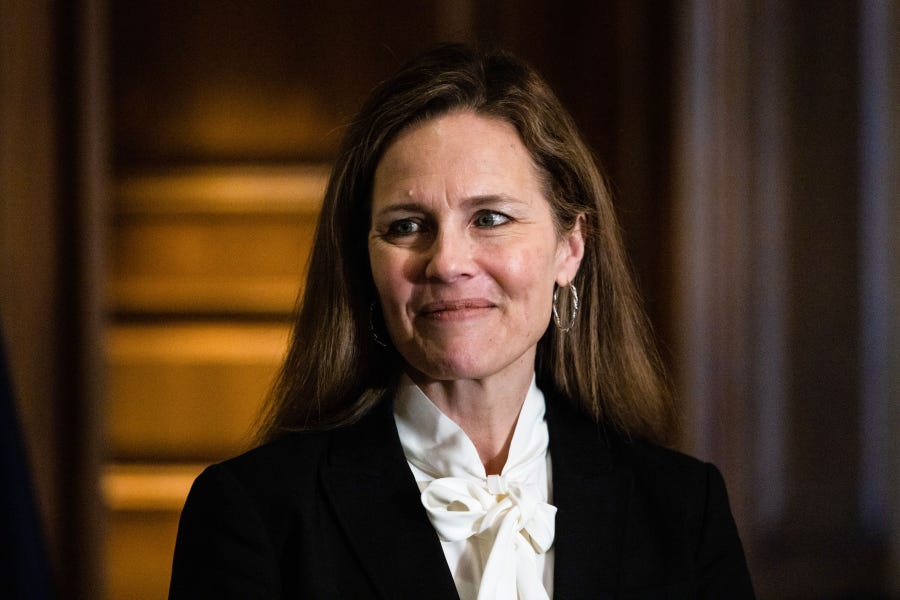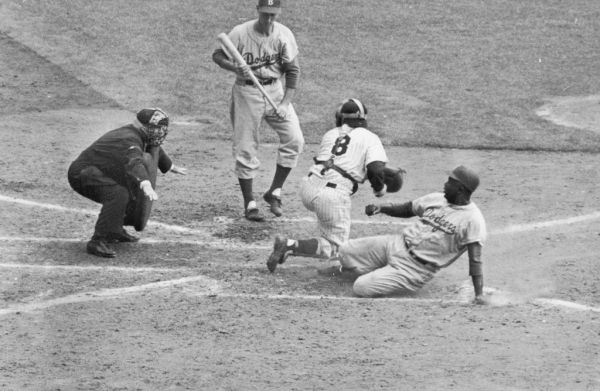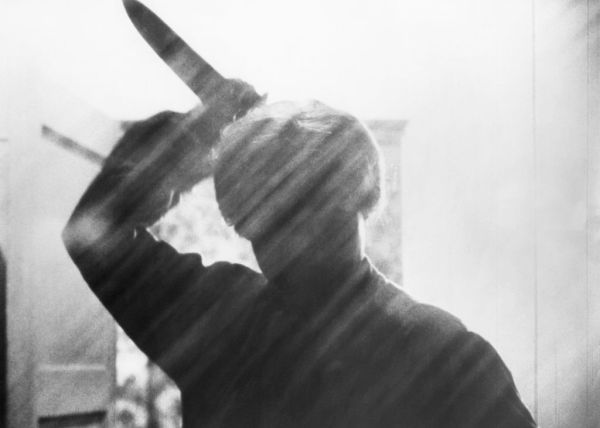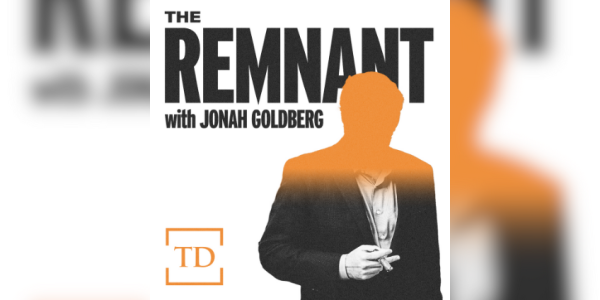It appears that Mitch McConnell is absolutely committed to confirming Amy Coney Barrett to the Supreme Court, and if the last few decades of American politics have taught us anything, it’s that what Mitch McConnell wants, Mitch McConnell gets. Thus, barring any unexpected developments, it’s time to turn the analysis from the wisdom of the Barrett nomination to the imminent reality of her tenure on the bench. What will be her impact on the Supreme Court and on American law?
But first, some important caveats. One of the reasons why conservatives are so persistently disappointed by the rulings of the Supreme Court is that they seem to forget that they’re nominating a human being who has a particular judicial philosophy, not an automaton focused on specific outcomes. There is no such thing as a conservative “vote bot” who will reliably grant the results that partisans want.
Moreover, the post-Robert Bork conservative judicial career path is virtually engineered to deny us any specific insight into the outcomes of particular cases—this is particularly true of specific insights into judgments about Roe v. Wade. While Democrats have long felt comfortable publicly imposing a pro-Roe litmus test on their nominees, post-Bork Republicans have generally not felt comfortable enough in their majorities to do the same (to be fair, some Republicans oppose litmus tests as a matter of principle.)
The result is that the judicial careers of most modern Republican nominees are characterized by rulings that generally please the GOP public while departing from expectations frequently enough to create enduring frustrations.
Now, let’s make this even more complicated. A given justice’s influence on the court depends not just on their philosophy but also on the court’s precedent and composition. Adding one conservative jurist to a court containing, say, eight progressives would make minimal impact. Divide the court equally, however, and the new judge can become the dominant force.
So, where are we with Amy Coney Barrett? Given her philosophy, the state of the court’s precedent, and the court’s composition, I’d classify her as more of an evolutionary than revolutionary force. There is not a significant amount of jurisprudence (with exceptions I’ll note below) where she’s likely to cast the deciding vote to materially transform American law. At the same time, however, she does of course make it more difficult—through her sheer presence—for a hypothetical President Biden to move the court to the judicial left.
The best, shorthand way to describe Judge Barrett’s philosophy is that she’s an originalist/textualist in Justice Scalia’s mold who possesses a standard view of stare decisis. Or, as Ed Whelan put it in National Review’s Bench Memos, Judge Barrett has endorsed the court’s existing view of the power of precedent. I found this quote from a Texas Law Review article by Barrett particularly instructive:
Stare decisis protects reliance interests by putting newly ascendant coalitions at an institutional disadvantage. It doesn’t prohibit them from rejecting a predecessor majority’s methodological approach in favor of their own, but it makes it more difficult for them to do so. The doctrine thus serves as an intertemporal referee, moderating any knee-jerk conviction of rightness by forcing a current majority to advance a special justification for rejecting the competing methodology of its predecessor. It also channels disagreements into the less disruptive approach of refusing to extend precedent—an approach that maintains better continuity with the past than does the abrupt turn of getting rid of it altogether.
It’s tough to take a complex doctrine and reduce it to a simple phrase, but a good way of thinking about Barrett’s approach above is to say, when it comes to problematic precedent, the default posture is to mend it, don’t extend it, but—at the same time—stare decisis is not truly a force that binds the hands of the court.
Again, in most cases, evolution not revolution.
Now, let’s walk through some hot-button issues, starting with the big one—abortion. Judge Barrett is not on record stating that Roe should be reversed. In fact, she’s on record stating that Roe is unlikely to be reversed. As recent Advisory Opinions guest and ace Supreme Court analyst Ilya Shapiro wrote, she’s said this twice:
[Barrett’s view of stare decisis] doesn’t mean that Barrett is all set to overturn Planned Parenthood v. Casey or Roe v. Wade; at a 2013 luncheon, she said “it is very unlikely at this point that the court is going to overturn Roe, or Roe as curbed by Casey. The fundamental element, that the woman has a right to choose abortion, will probably stand.” And in a 2016 lecture at Jacksonville University, Barrett said that although there could be changes in the ways that states are allowed to restrict abortion, the core holding of Roe is unlikely to change.
Thus, Republicans shouldn’t be shocked if she doesn’t immediately and aggressively go after Roe. After all, there is only one justice on the current court, Justice Clarence Thomas, who has clearly questioned both the original Roe decision and Casey, the case that reaffirmed the existence of the abortion right.
That doesn’t mean that other justices (including Barrett) might be willing to revisit Casey if the right case presented itself. It does mean that the more likely course might be that Barrett (and the court) adopt—in Shapiro’s words—a “nibbling around the edges” approach that increasingly upholds state restrictions on abortion without touching the core of Casey.
What about the First Amendment? Again, as a general rule look for evolution not revolution. Religious liberty is on a 15-case, decade-long winning streak at the high court, and I’d look for that streak to continue. There is, however, a fascinating case on the docket that could establish rather quickly the extent to which Barrett has, in fact, adapted Justice Scalia’s jurisprudence.
The case is called Fulton v. City of Philadelphia, and it’s set to be argued on November 4, the day after the presidential election. The case arose out of Philadelphia’s decision to shut down Catholic Social Services’ ability to participate in the city’s foster care system because—consistent with church teaching—CSS cannot provide written endorsements for same-sex couples.
A fascinating subplot in the case is that the court is explicitly considering whether it should “revisit” Employment Division v. Smith, the infamous (to religious liberties lawyers) court opinion that dramatically weakened the protections of the Free Exercise Clause when it ruled that a state could deny unemployment benefits to someone who was fired for using peyote as part of a religious ritual. And why is that so fascinating—especially as applied to Judge Barrett? Because Justice Scalia wrote the Smith opinion, and it was arguably his greatest judicial mistake.
Will a Justice Barrett help correct her mentor’s error, or will she be persuaded by his reasoning and vote to uphold its core framework disfavoring religious liberty challenges to “neutral, generally applicable” laws? We’ll find out soon enough.
As a general rule, however, I’d expect Judge Barrett to reinforce existing court trends that expand both free speech and free exercise protections. I’d also expect her to be a zealous defender of the Due Process Clause (one of her most important Circuit Court opinions called into question the legal procedures of campus sexual assault tribunals) and very much in the Scalia mold in frequently joining progressive justices in upholding the civil liberties of criminal defendants.
What about the Obamacare case? It turns out that we may already have a clue as to how she might rule. Jonathan Adler writes in Reason:
Two weeks before President Trump nominated Judge Amy Coney Barrett to replace the late Justice Ruth Bader Ginsburg on the Supreme Court, Judge Barrett participated in a moot court of Texas v. California at the William and Mary Institute of Bill of Rights Law’s 2020 Supreme Court Preview. As the Los Angeles Times reports, the moot did not go well for the plaintiffs.
[Judge Barrett] was part of an eight-judge panel that heard the mock arguments, conducted at William & Mary Law School.
None of the judges ruled in favor of the administration and Republican states’ request to strike down the law.
Five of the judges ruled that one part of the law — the so-called individual mandate, which Congress has already effectively nullified — was unconstitutional, but that the rest of the healthcare law could stay in place. The other three judges would have thrown out the case, arguing that the conservative states challenging the law did not have standing to bring the suit.
It’s not known which side Barrett was on because the participants’ votes were not revealed, according to a person who viewed the session and declined to be identified. (Emphasis added.)
This should not be a surprise. Contrary to the impression provided by some press reports, Judge Barrett’s prior comments (as a law professor) on the statutory interpretation issues in NFIB v. Sebelius and King v. Burwell tell us nothing about how she might rule in Texas v. California. None. Nada. Zilch.
Again, evolution not revolution. But there is one arena where she could be instrumental in at least one truly significant constitutional development—the transformation of gun rights jurisprudence.
In June, the court denied cert in every single gun rights case, leaving unresolved a host of critical issues, including the constitutionality of prohibitions on carrying guns outside the home and the constitutionality of assault weapon bans and bans on so-called large capacity magazines. Reportedly, neither “side” of the gun rights debate had confidence they could secure five votes for their positions, so they punted.
Expect the punting to stop. Expect the court to take one or more gun rights cases, beginning perhaps with the “easiest” cases challenging the most expansive restrictions. Or it might go big. But either way, expect the logjam to break.
Finally, there are important and unpredictable side effects of creating a court where there is no true “swing vote”—like, say, Justice Roberts—but instead there is a large conservative coalition that may have a bit more confidence in its rulings. Unless, of course, an angry Democratic majority hangs court packing over its head like the Sword of Damocles.
Indeed, if the Democrats are smart, they won’t pack the court even if they win. It’s too destabilizing. They’ll just leave the possibility out there, lingering, with an implied threat: “Nice little nine-person court you’ve got there. I’d hate to see anything happen to it.” The likely result? Political pressures would mean, yes, more judicial evolution, less revolution.
One more thing …
I’m grateful for this review of Divided We Fall by Adam Wakeling in Arc Digital. Here are the key graphs:
French is a very reasonable writer, and his empathy for those who think differently from him comes through in the book. He appreciates both the anxiety of religious conservatives who see the tide of history running against them and the alarm progressives feel at the sudden rise of the alt-right. It is unfortunate that this is unusual enough to merit comment, but it certainly adds value to the book. And while French’s warning is directed to his fellow Americans, the problems he identifies are growing in other democracies as well.
Sadly, but perhaps realistically, French is not optimistic. There is a need for a new American political class, he writes, but not a demand for one. Still, it is hard to see how a new culture war between rival factions who have abandoned democratic norms and accepted that the ends justify the means could possibly lead to anything other than a downward spiral. In the time I’ve been an outside observer of American politics I’ve never been more troubled than I have this year.
Me neither Adam. Me neither. You can buy the book here.
One last thing …
I’ve been watching Cobra Kai on Netflix, and if you’re a child of the ‘80s, it’s pure gold. It takes the dynamics of the Karate Kid movie, flips them, shakes them, and stirs them. Great stuff. The entire first episode is on YouTube, and it’s glorious. If you’ve got time, enjoy:
Photo by Graeme Jennings/POOL/AFP via Getty Images.






Please note that we at The Dispatch hold ourselves, our work, and our commenters to a higher standard than other places on the internet. We welcome comments that foster genuine debate or discussion—including comments critical of us or our work—but responses that include ad hominem attacks on fellow Dispatch members or are intended to stoke fear and anger may be moderated.
You are currently using a limited time guest pass and do not have access to commenting. Consider subscribing to join the conversation.
With your membership, you only have the ability to comment on The Morning Dispatch articles. Consider upgrading to join the conversation everywhere.